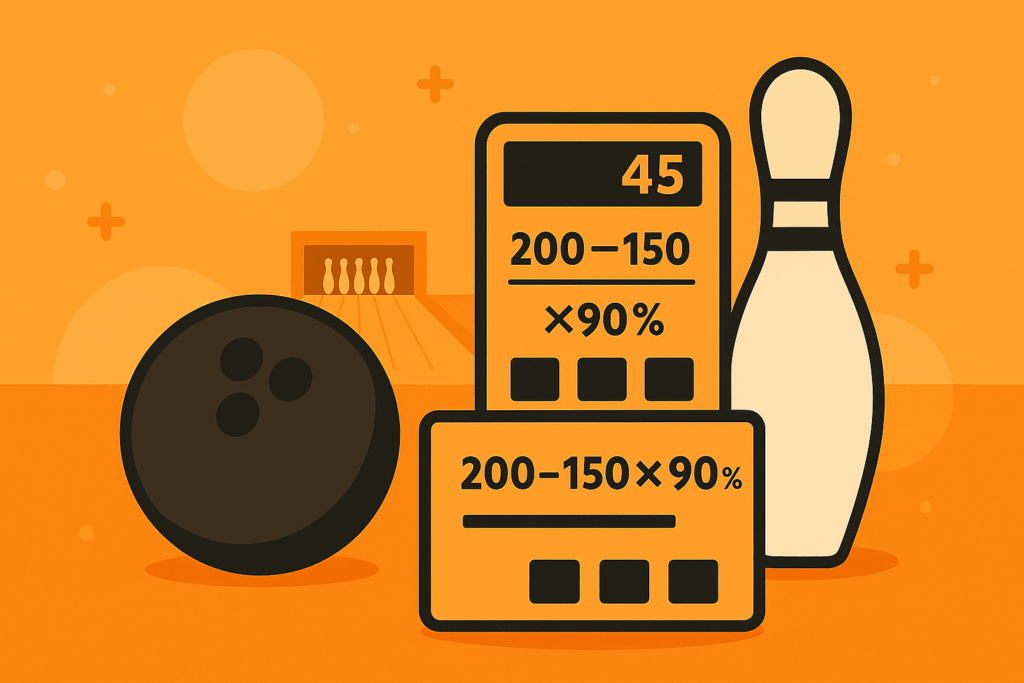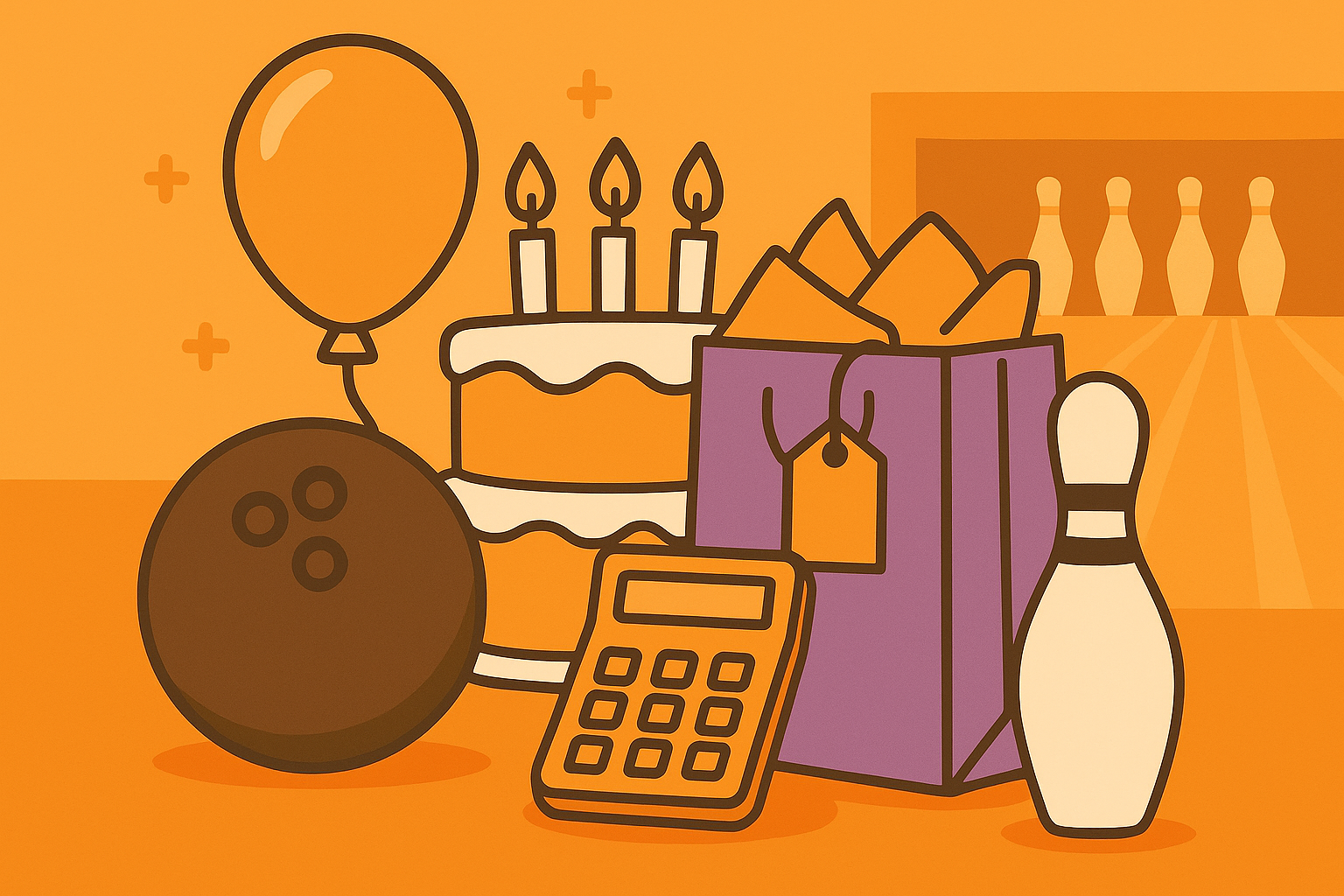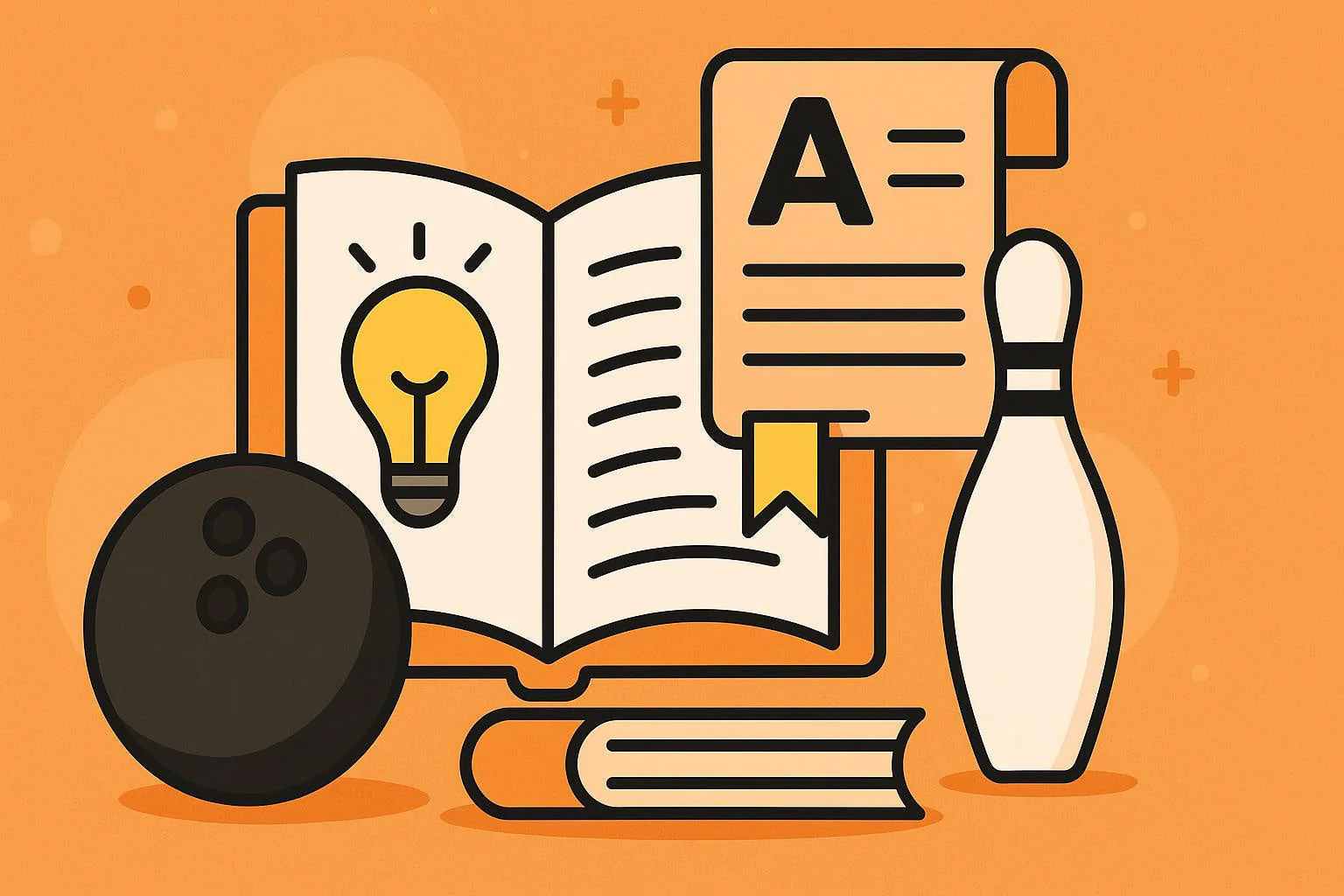Bowling is one of the few sports where beginners and seasoned players can compete side by side. But in league play, balancing the skill gap between a 120-average bowler and a 200-average bowler requires more than good intentions—it requires a structured system. That’s where handicaps come in.
The bowling handicap system is designed to equalize competition by adjusting scores based on a bowler’s average. Far from being a bonus or a penalty, it’s a mathematical framework that ensures league matches are decided by performance on the lanes rather than long-standing averages alone. Without handicaps, high-average bowlers would dominate; with them, every player has a realistic chance to contribute to their team and win points.
This guide explains how handicaps are calculated, why leagues use different base scores and percentages, and what it all means for your weekly scores and standings. Whether you’re new to league play or simply want to understand how your adjusted scores are determined, this breakdown will help you see the system with clarity.
What a Bowling Handicap Actually Is
Think of a bowling handicap as a score equalizer. It’s a number added to your actual game score to help level the playing field between bowlers of different skill levels. It’s not a reward or a penalty—it’s a balancing act.
Say your average is 140 and your teammate’s is 190. Without a handicap, you’d be playing catch-up every week. But with a properly calculated handicap, your 160 game could beat their 190. That’s not just good for morale—it’s good for competition.
Handicaps are used almost exclusively in league and amateur play. Professional tournaments usually go “scratch,” meaning no handicaps—just raw scores. But for the rest of us, handicaps are the great equalizer that keeps things interesting.
And no, your handicap isn’t a fixed label. It’s not a judgment of your talent or a ceiling on your potential. It’s a dynamic number that shifts as your average shifts. Bowl better, and your handicap drops. Struggle for a few weeks, and it might climb. It’s not personal—it’s just math.
How Bowling Handicaps Are Calculated
Most leagues follow a standard formula to calculate handicaps. It’s not complicated, but the variables can make a big difference:
(Base Score – Bowler’s Average) × Percentage Factor = Handicap
Let’s unpack that.
Base Score
This is a fixed number chosen by your league—usually 200, 210, or 220. It represents a benchmark of high-level play, not perfection. The higher the base, the more cushion lower-average bowlers get.
Bowler’s Average
Your average is calculated by adding up your total pins over a set number of games and dividing by the number of games. Most leagues use your most recent 3 to 21 games, depending on their rules. New bowlers start with a provisional average that becomes official after a few weeks.
Percentage Factor
This is the percentage of the difference between the base score and your average that you’re awarded. Common values are 80%, 90%, or 100%. A higher percentage means a more generous handicap.
Example: If your average is 150, the base score is 200, and the percentage factor is 90%, your handicap would be:
(200 – 150) × 0.90 = 45
So, if you bowl a 160, your adjusted score for league purposes would be 205.
Different leagues tweak these numbers to suit their competitive environment. Some go with 100% of 220 for maximum inclusivity. Others stick to 80% of 200 to reward consistency. The math stays the same—the philosophy behind it changes.
Calculating Your Bowling Average
Your average is the foundation of your handicap, and it’s also a great way to track your progress. Here’s how to calculate it:
Total Pins ÷ Total Games = Average
Let’s say you’ve bowled five games with scores of 140, 155, 160, 150, and 145. That’s 750 pins total. Divide by 5, and your average is 150.
Most leagues update your average weekly or bi-weekly. That means your handicap can change throughout the season. It’s a living number, not a fixed identity.
For an easier way to crunch the numbers, try our Bowling Handicap Calculator—just plug in your scores and it will instantly calculate your average and handicap for you.
Why Base Scores and Percentage Factors Matter
These two variables—base score and percentage factor—are how leagues fine-tune competitiveness. They might seem arbitrary, but they shape the entire vibe of your league.
Base Score
Set too low, and high-average bowlers dominate. Set too high, and it can feel like everyone’s just chasing numbers. Most leagues settle somewhere in the 200–220 range, depending on the skill level of their bowlers.
Percentage Factor
This is where things get philosophical. A 100% factor gives bowlers the full difference between their average and the base score. That’s great for inclusivity. An 80% factor, on the other hand, rewards consistency and improvement. It’s less forgiving—but more competitive.
Some leagues even adjust these values mid-season if things feel unbalanced. It’s not common, but it happens. The goal is always the same: keep things fair, fun, and competitive.
How Handicaps Work in League Play
In league bowling, handicaps are baked into the scoring system. They’re not a side note—they’re the main event.
Each bowler’s handicap is added to their actual score. In team play, all team members’ handicaps are added to their individual scores to calculate the team’s total. That total determines who wins each game or series.
Let’s say you bowl a 160 with a 45 handicap. Your adjusted score is 205. Your teammate bowls a 180 with a 20 handicap, making their adjusted score 200. Your team’s total is 405. That’s the number that goes up against your opponents’ adjusted total.
League standings are usually based on points earned each week—points for winning individual games, series totals, or both. Handicaps make it possible for teams with a wide range of skill levels to compete meaningfully.
New bowlers without an established average are often assigned a temporary average based on their first few games. This provisional average is used to calculate a temporary handicap until enough games have been bowled for a more accurate number.
Some leagues also implement caps on handicaps to prevent extreme disparities. Others use rolling averages to keep handicaps reflective of recent performance. It’s all about balance.
Popular Handicap Systems in Use
While the formula stays the same, leagues vary widely in how they apply it. Here are a few common setups:
- 90% of 210: A balanced system used in many adult leagues. It rewards improvement without being overly generous.
- 100% of 200: Often used in youth or beginner leagues to encourage participation and level the field.
- 80% of 220: A more competitive setup that favors high-average bowlers while still giving others a chance.
Senior leagues may use more generous systems to account for physical limitations. Tournaments often go scratch or use stricter handicap rules. The setup depends on the league’s goals and the makeup of its players.
Pros and Cons of the Handicap System
Like any system, bowling handicaps come with trade-offs. Understanding both sides helps you appreciate what the system is trying to do—and where it can fall short.
What Works
Handicaps make leagues more inclusive. They allow beginners to compete with veterans, and they keep matches interesting regardless of skill level. They also encourage improvement—watching your handicap shrink as your average rises is a tangible sign of progress.
What Doesn’t
The biggest issue? Sandbagging. That’s when a bowler intentionally underperforms to inflate their handicap. It’s rare, but it happens. Most leagues have rules and monitoring in place to catch it—like average caps, review committees, or disqualification from prizes.
Some high-average bowlers also feel the system punishes excellence. They can bowl a near-perfect game and still lose to someone with a strong handicap. It’s a valid frustration, but for most leagues, the benefits of a balanced system outweigh the drawbacks.
Advice for New Bowlers in Handicap Leagues
If you’re new to league play, the handicap system can feel a little mysterious. Here’s what you need to know:
First, don’t worry about your average right away. Everyone starts somewhere, and your handicap is designed to help. Focus on consistency and learning the game.
Second, remember that your first few games are provisional. Your handicap will adjust as you build a history. Be patient—it’ll stabilize soon enough.
Third, use your handicap as a benchmark. Set personal goals based on your adjusted scores.
And finally, ask questions. Most league bowlers are more than happy to explain how things work. Your teammates, your league secretary, even the folks at the pro shop—they’ve all been where you are now.
What to Expect as You Improve
As your average increases, your handicap will naturally decrease. This isn’t a drawback—it’s a reflection of your progress. A lower handicap signals that your performance is improving, and while it may narrow the cushion that helps you compete, it also makes your victories more meaningful because they’re earned on the strength of your actual scores.
It’s common for bowlers to experience plateaus where averages rise slowly or fluctuate from week to week. That’s part of the sport. Bowling improvement rarely follows a straight line; there will be stretches where your scores climb steadily and others where every spare feels elusive.
The important thing is consistency and persistence. By continuing to practice, refine your mechanics, and track your progress, you’ll see long-term growth. Ultimately, the handicap system is designed to support that journey—it rewards steady improvement while keeping the competition engaging for everyone.






